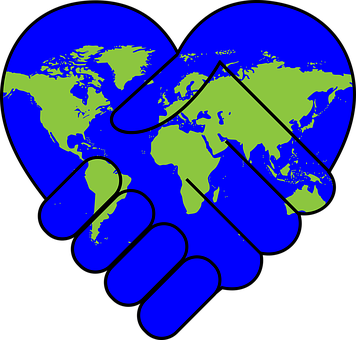Global Education
 Global education involves learning about those problems and issues that cut across national boundaries and about the interconnectedness of systems—ecological, cultural, economic, political, and technological. Global education involves seeing things through the eyes and minds of others and realizing that while individuals and groups may view life differently, they also have common needs and wants. Global education includes the study of world cultures and religions, world literature, the interrelatedness of world history, and cross-cultural communication skills. Global education looks at cultural diversity, human rights, and prejudice reduction outside the nation, to provide students with an understanding of the world outside their own (Lucas, 2010). Global education also means learning from and about others so that we can make changes to our own cultures and constructs. Global education creates an increasingly deeper appreciation of and interaction with others. This newfound appreciation results in benefits to economics, community cohesion, the environment, peace studies, and more (Skelton, 2010).
Global education involves learning about those problems and issues that cut across national boundaries and about the interconnectedness of systems—ecological, cultural, economic, political, and technological. Global education involves seeing things through the eyes and minds of others and realizing that while individuals and groups may view life differently, they also have common needs and wants. Global education includes the study of world cultures and religions, world literature, the interrelatedness of world history, and cross-cultural communication skills. Global education looks at cultural diversity, human rights, and prejudice reduction outside the nation, to provide students with an understanding of the world outside their own (Lucas, 2010). Global education also means learning from and about others so that we can make changes to our own cultures and constructs. Global education creates an increasingly deeper appreciation of and interaction with others. This newfound appreciation results in benefits to economics, community cohesion, the environment, peace studies, and more (Skelton, 2010).
Through global education, students will recognize that they have a view of the world that is not universally shared and develop receptivity to other perspectives. Students will acquire an awareness and understanding of the global condition and of global developments and trends. They will develop an understanding of the concepts of justice, human rights, and responsibilities and be able to apply that understanding. Students will become aware that the choices they make and the actions they take individually and collectively have repercussions for the global present and the global future and develop the social and political action skills necessary for becoming effective participants in democratic decision-making at a variety of levels (Marshall, 2007). Global education and critical pedagogy go hand in hand to create an atmosphere that promotes diversity and creates engaged and active citizens. In order for students to question policies and practices, they must understand how they affect everyone and how the world works together.
Interested in learning more about how to incorporate culturally sensitive practices into your work with young children? H&H Child Care Training Center has a variety of online and in-person course options to help educators make culturally competent decisions and create a classroom environment that honors, respects, and celebrates all cultures. Consider the following course offerings:
Strength in Differences: Cultural Diversity
Training Guide for Families from Diverse Language and Cultural Backgrounds
This is just a sampling of our course offerings. Visit our website to learn more about what H&H can offer in fulfilling your professional development requirements.
References:
Lucas, A. G. (2010). Distinguishing between multicultural and global education: The challenge of conceptualizing and addressing the two fields. Clearing House, 83(6), 211. Retrieved from Academic Search Premier.
Skelton, M. (2010). Global learning. Education Journal, (124), 39. Retrieved from Academic Search Premier.
- 45 Hour Child Growth and Development
- Active Supervision: A Strategy That Works
- CDA Bridge Bundle: Infant/Toddler without Portfolio Review
- Engaging Families During a Pandemic
- Birth to Five CDA Credential with Portfolio Review
- Effective Supervision in Child Care
- CDA Bridge Bundle: Preschool without Portfolio Review
- CDA Bridge Bundle: Family Child Care without Portfolio Review
- The Importance Of Recognizing Obesity In Children
- Online CDA Classes
- Kinetic Sand Day & International Youth Days
- Celebrate Earth Day with Gross Motor Play and Outdoor Learning!
- Exploring the World: Fun and Educational Social Studies Activities for Preschoolers
- Montessori Education: A Comprehensive Overview
- The Impact of Montessori Education on Early Childhood Development
- Sep 21 – International Day of Peace: Foster Harmony and Understanding in Your Classroom
- Peace Education and Grace and Courtesy in Montessori Education
- Oct 5th is World Teachers’ Day: Creative Ways to Celebrate Educators
- Celebrating Diverse Cultures: Upcoming Holidays from Around the World
- 15 Earth Day Activities for Kids That Teach Sustainability